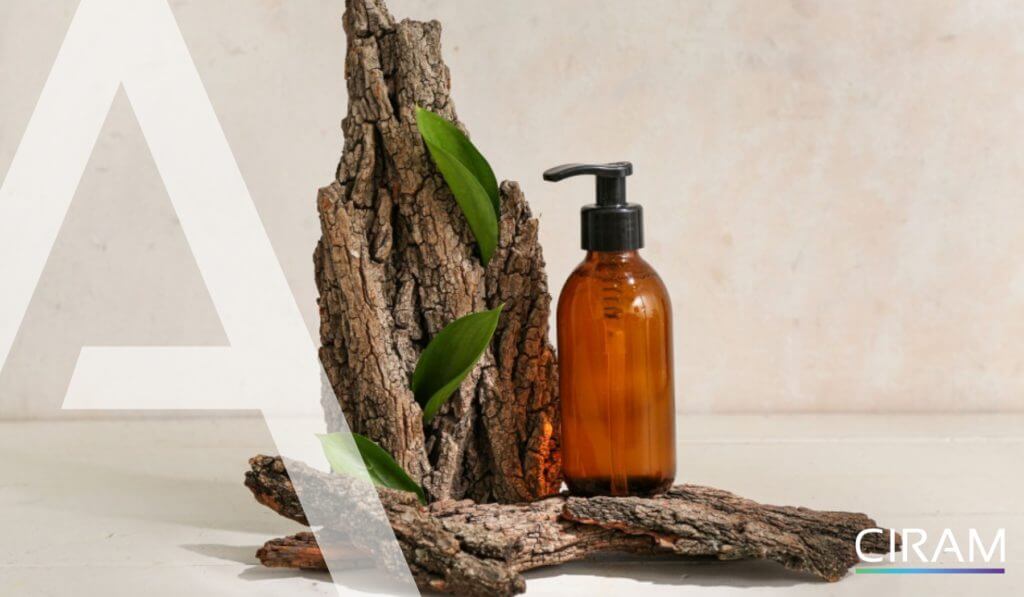Radiocarbon analysis of cosmetics
Test the naturalness of your active ingredients, excipients and finished products using radiocarbon analysis with CIRAM laboratories. Carbon 14 and stable isotopes can be used to detect adulteration, authenticate a biobased product or determine botanical provenance or origin.

Specialists in carbon-14 (or radiocarbon) analysis, CIRAM laboratories comply with all current standards to deliver results that comply with regulations.
CIRAM laboratories analyze all cosmetic products to study their biobased content, whether in active ingredients, excipients or finished products.
Using radiocarbon (or carbon-14) analysis, we measure the proportion of natural versus synthetic components. With CIRAM’s measurements and subject to a pMC of 100, you can stamp your products 100% natural. Discover the different methods of cosmetics analysis with CIRAM laboratories.
Radiocarbon analysis, for in-depth analysis of cosmetics
Radiocarbon analysis is based on the activity of the isotope 14 of carbon. Knowing that carbon 14 decays over time, and that it has completely disappeared after around 60,0000 years, we can consider that oil and other fossil materials no longer contain carbon 14; they contain only old” carbon, unlike biomass which has a full carbon 14 reservoir and therefore contains only “modern” carbon.
The radiocarbon technique makes it possible to measure the quantity of “old” carbon and “modern” carbon. This method is effective and has many advantages:
- It works on all materials, whether solid, liquid or gaseous;
- It offers high precision, of the order of 0.4% and a detection limit of 0.3%;
- It is very fast, because the results are obtained in 7 working days on average, and inexpensive.
In cosmetics, the high content of natural products is increasingly in demand. It is both a marketing and ecological element. A carbon 14 test can then be used to develop a natural product, to evaluate a supplier or to control a product before marketing. This technique is useful and used from R&D to the finished product, see for packaging analysis.
Measuring the percentage of natural products will be very useful for verifying regulatory or normative conformity of raw materials, authenticating products from organic farming, verifying a raw material.
Furthermore, the analysis of the stable isotopic ratios of carbon, nitrogen, oxygen and hydrogen (δ13C, δ15N, δ18O and δ2D), thanks to analyzes by EA-IRMS, elemental analysis coupled with isotope ratio mass spectrometry, makes it possible to
- define a geographical provenance,
- detect adulteration,
- identify the botanical origin of a compound.
CIRAM complies with various international standards, such as ASTM D6866, EN 16640, in order to provide you with reliable and precise expertise. The EN 16128 standard dedicated to natural and organic cosmetic products recommends the analysis of the biobased part using the radiocarbon (carbon 14, 14C) technique.
The water content of a cosmetic product will not be taken into account and will not disturb the radiocarbon measurement. Indeed, we only measure the total quantity of carbon and its isotopic ratios. Hydrogen and oxygen atoms will not be quantified.
To summarize, the use of radiocarbon for the characterization of cosmetics is a reliable, a precise method that works on all types of matrices (liquid, solid and gel) without needing to know the chemical composition.
It is also relevant to use radiocarbon at all stages of the industrial process (from Research and Development to the finished product, but also for sourcing, validation of different treatments and even for obtaining a label ).
